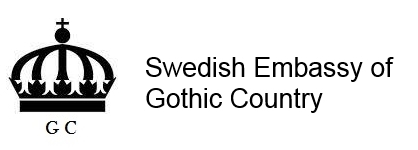 We Swedes have such a love and fascination with American culture. This trend accelerated after WWII. Music, movies, cars, clothes, food, drink and you name it. Even the obscure gothic country genre has found its way over here (a strong but limited interest). However, plastic couch covers never made it over the ocean. Their purpose is to protect the couch. In my ignorance I thought that it was to protect the couch when you were away (just as furniture dust covers in the Victorian era). However, the plastic covers were never taken off. You were supposed to sit on the plastic cover(!). Plastic couch covers peaked in the 1960-70s. It's assocíated with a frugal older generation. In those days, buying a couch wasn't a spontaneous buy on credit. Money was saved and a lot of time was put in to find the the right size, shape and style. Once bought, the first thing to do was to place a plastic cover over it. Obviously, there's a trade-off between aesthetics and utility. On the downside, you slided about for a while before the plastic had adjusted and the cover made a characteristic sound when you sat down. You couldn't feel the fabric. The seating comfort and visual impression clearly fell by the wayside. On the upside: you could see the fabric. The couch was protected, thus lengthening the life of the couch and maximizing its utility. In the best of worlds, the couch could be passed on to the next generation (we shouldn't exaggerate the demand for this). Younger generations have a more healthier, yet pragmatic, approach. We buy a couch for the comfort and without a protection plan.
We Swedes have such a love and fascination with American culture. This trend accelerated after WWII. Music, movies, cars, clothes, food, drink and you name it. Even the obscure gothic country genre has found its way over here (a strong but limited interest). However, plastic couch covers never made it over the ocean. Their purpose is to protect the couch. In my ignorance I thought that it was to protect the couch when you were away (just as furniture dust covers in the Victorian era). However, the plastic covers were never taken off. You were supposed to sit on the plastic cover(!). Plastic couch covers peaked in the 1960-70s. It's assocíated with a frugal older generation. In those days, buying a couch wasn't a spontaneous buy on credit. Money was saved and a lot of time was put in to find the the right size, shape and style. Once bought, the first thing to do was to place a plastic cover over it. Obviously, there's a trade-off between aesthetics and utility. On the downside, you slided about for a while before the plastic had adjusted and the cover made a characteristic sound when you sat down. You couldn't feel the fabric. The seating comfort and visual impression clearly fell by the wayside. On the upside: you could see the fabric. The couch was protected, thus lengthening the life of the couch and maximizing its utility. In the best of worlds, the couch could be passed on to the next generation (we shouldn't exaggerate the demand for this). Younger generations have a more healthier, yet pragmatic, approach. We buy a couch for the comfort and without a protection plan.
Featured
"The aesthetics of plastic couch covers"
Konztroll
Hits: 1161
